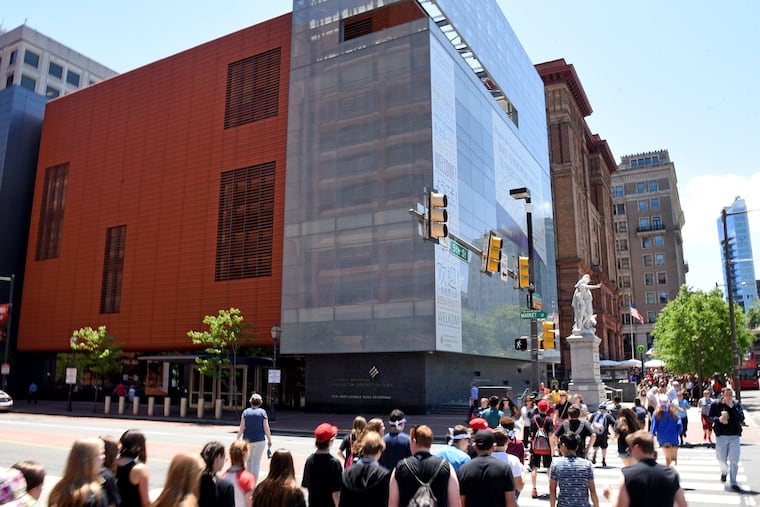Gift from Stuart Weitzman allows Jewish history museum, fresh out of bankruptcy, to buy its own building
Footwear millionaire gives "eight figure" donation to museum, which will now bear his name.

The National Museum of American Jewish History, which only emerged from Chapter 11 bankruptcy in mid-September, has received a gift from shoe entrepreneur Stuart Weitzman that wipes out the museum’s building construction debt and allows it to purchase its building, at Fifth and Market Streets, renaming itself the Weitzman National Museum of American Jewish History.
In a brief online article Tuesday for eJewishPhilanthropy.com, museum chief executive Misha Galperin noted that the bankruptcy settlement reached in September allowed museum trustee Mitchell Morgan to buy the museum’s building for $10 million and lease it back to the museum for $1,000 a month.
“The Morgan Family also gave us the option of buying back the building any time over the next 42 months,” Galperin said.
“The Weitzman gift will allow us to buy back the building from the Morgan family right away.”
The amount of the Weitzman donation could not be immediately determined and museum officials declined to state the figure, citing a request by Weitzman
In an interview Tuesday, Galperin said he could not reveal the exact size of the Weitzman gift, which he characterized as so large it brings the museum at least halfway to the goal of an as-yet-unannounced capital and endowment fund-raising campaign. Galperin also would not disclose the size of the fund-raising campaign.
“I can tell you [the Weitzman gift] has allowed us to buy our building immediately and set up an eight-figure endowment,” Galperin said. “That’s as much as I can say. It’s very significant and it deserves the name of ... the museum. It really ensures our future.”
The museum filed for Chapter 11 bankruptcy protection in March 2020, citing more than $30 million in debt, most of which grew from its $150 million building project a decade earlier.
As part of the bankruptcy settlement, a dozen or so bondholders — businesspeople and philanthropists such as Sidney Kimmel, George and Lyn Ross, Ronald Rubin, and Joseph Zuritsky, or their trusts — agreed to forgive the more than $13 million owed them, ending up only with $100,000 to be split among the group.
Negotiations with Dime Community Bank, owed about $17 million, were “somewhat protracted, but not so much around the amount but about how to get it paid,” Lawrence G. McMichael, the museum’s bankruptcy lawyer from Dilworth Paxson, told The Inquirer at the time.
At that point, Morgan and his family put up $10 million, which gave the Morgan family group ownership of the building.
In his article in eJewishPhilanthropy.com, Galperin wrote that “this settlement was made possible by our modern-day Maccabee, Mitchell Morgan and his family who, in addition to forgiving the $1 million note that they held, agreed to buy our building for $10 million so that we could pay off the bank, and then lease it to NMJAH for $1,000 per month.”
A spokesperson for the museum said that Weitzman, who hails from Massachusetts and lives in Connecticut, was first attracted to the museum by interest in George Washington’s letter to the Jewish community of Newport, R.I. The museum highlighted the letter in its 2012 exhibition “To Bigotry No Sanction: George Washington & Religious Freedom.”
Weitzman graduated from the Wharton School at the University of Pennsylvania in 1963 and began designing shoes for his father’s business, Seymour Shoes.
His shoe designs, which became known for their use of unconventional materials like vinyl, cork, wallpaper, Lucite, and gold, are now sold in more than 70 countries, and he has designed footwear for celebrities, including Beyoncé and Taylor Swift.